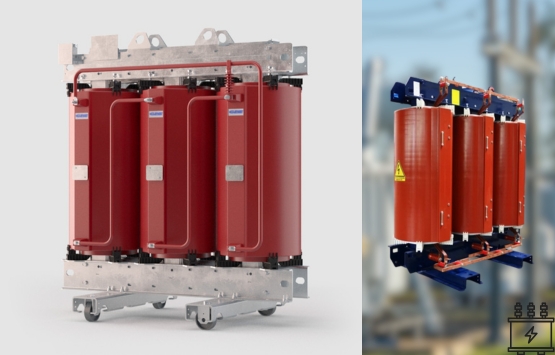Dry Type Transformers
- Home
- What We Do
- Dry Type Transformers

Dry Type Transformers
Dry Type Transformers are designed for environments where safety, durability, and minimal maintenance are paramount. Manufactured according to IEC 60076-11 standards, these transformers are built to withstand extreme conditions while delivering exceptional performance.
Why Choose AKS Dry Type Transformers?
AKS’s Dry Type Transformers offer unparalleled reliability and efficiency. With an emphasis on safety and performance, our products are ideal for use in various industrial and commercial applications. Designed to meet the highest environmental, climatic, and fire behaviour standards, our transformers ensure optimal operation even in the most demanding environments.
High Reliability
Advanced Environmental Design
Climatic and Environmental Classes
AKS Dry Type Transformers comply with international standards for climatic and environmental conditions. These transformers are designed to operate under the toughest conditions as outlined in IEC 60076-11. Below are the key classifications:
| Climatic Class | Description |
|---|---|
| Class C1 | Suitable for operation at ambient temperatures above -5°C but can be exposed to temperatures down to -25°C during transport/storage. |
| Class C2 | Suitable for operation, transport, and storage at ambient temperatures down to -25°C. |
| Class C3 | Suitable for transport/storage down to -40°C and operation down to 25°C. |
| Class C4 | Suitable for transport/storage down to -50°C and operation down to 40°C. |
| Class C5 | Suitable for transport/storage down to -60°C and operation down to 50°C. |
Environmental Classes
The following environmental classes are defined for dry type transformers, considering factors such as humidity, condensation, and pollution:
| Environmental Class | Description |
|---|---|
| Class E0 | No condensation occurs, and pollution is negligible (typically indoor clean, dry installations). |
| Class E1 | Occasional condensation can occur (e.g., when de-energized), with limited pollution. |
| Class E2 | Frequent condensation or light pollution, or a combination of both. |
| Class E3 | Frequent condensation or medium pollution, or a combination of both. |
| Class E4 | Frequent condensation or heavy pollution, or a combination of both. |
Cooling Methods and Insulation Classes
Dry Type Transformers utilize two primary cooling methods, which influence their efficiency and operational capacity:
| Cooling Method | Description |
|---|---|
| Air Natural (AN) | Uses natural air circulation for cooling. |
| Air Forced (AF) | Uses forced air circulation for improved cooling efficiency. |
Insulation classes define the thermal limits of the transformer. For Dry Type Transformers, we offer two insulation classes:
| Insulation Class | Temperature Limit |
|---|---|
| Class F | 155°C thermal limit. |
| Class H | 180°C thermal limit. |

